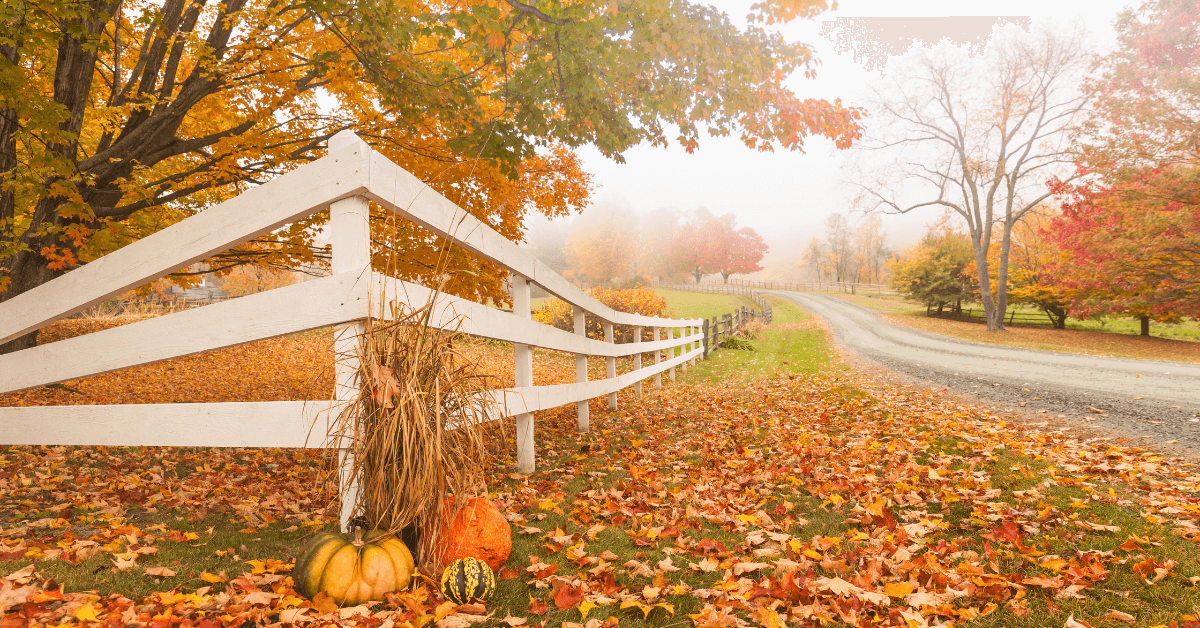
Summer is gone. The heat has died down. In its place is the crisp air and colorful leaves of fall. Though it’s getting colder, we have a few months to go until the harsh weather of winter comes knocking. With these mild temperatures in mind, it’s the perfect time to give your fence a little TLC. Let’s explore what you can do to keep your metal, vinyl, or wood fence healthy and sturdy through the winter.
Inspect for Damage
Before you make any repairs or replacements, you should identify any areas of concern by walking along the length of your fence with a keen eye for damage. If you have a wood fence, be on the lookout for signs of rot. Pay special attention to the base where moisture is most likely to collect. Additionally, look for warping and loose boards.
If you have a metal fence, look for rust, corrosion, and loose connections. If you have a chain link fence, make sure there are no gaps or sagging areas that could become a detriment to the fence’s strength.
Finally, if you’re inspecting a vinyl fence, keep your eyes peeled for holes and cracks that might have developed as a result of fluctuating temperatures or physical impacts. If any posts are wobbling or leaning, they should be fixed to maintain the stability of the structure.
Clean the Fence
Now that your inspection is complete, it’s time to clean the fence—we promise we’ll eventually get to the actual repairs, so bear with us. It’s important to clean your fence because it means you’ll be ridding it of things that could cause erosion, like mold or mildew.
Cleaning Tips: Wood Fence
Use a mild detergent and water to remove unwelcome substances from the surface. If you’re using a pressure washer, take care to use it on a lower setting to avoid causing damage to the wood itself.
Cleaning Tips: Metal Fence
Mild soap and water are a great combination for cleaning your metal fence, as well. It will effectively remove grime that can cause corrosion and make your fence look unsightly. Once you finish cleaning, dry it thoroughly to reduce its chances of corrosion.
Cleaning Tips: Vinyl Fence
One big benefit of a vinyl fence is its low upkeep requirements. Because of this, you’ll find fence maintenance to be a rare event. Even so, cleaning dirt and grime off of it can only help to keep it in top condition. Use a garden hose and soft brush, as harsh materials could scratch the surface of your vinyl fence.
Repair or Replace
If you notice a small issue in the fall and fail to fix it, you may be regretting that neglect in the midst of a cold winter when the problem has grown. Best to do it now!
Repair Tips: Wood Fence
Replace damaged or rotting boards on your wood fence that are beyond repair, as well as rusted or loose nails, screws, and other hardware. If you notice your fence has suffered significant warping, it may be wise to replace the entire affected section.
Repair Tips: Metal Fence
Notice any rust when you performed your inspection? Time to make it go away! Sand down the affected areas and apply a rust-inhibiting primer before you paint over any spots that need attention. While you’re at it, tighten any loose screws or bolts.
Repair Tips: Vinyl Fence
If you came across any cracks or holes during your walk along the fence, utilize a vinyl repair kit to fill them in. Once that’s done, make sure all the fence posts are secure. If there are any loose ones, position them and stabilize them by filling in the post holes.
Apply a Protective Coating
A protective coating is a great way to protect your fence from the elements. This helpful layer of defense can minimize moisture, rust, and ultraviolet (UV) damage.
- Wood Fences: Wood stain sealant is the star here, as it helps prevent moisture and rot. Reapplication is recommended every couple of years to make sure you’re maximizing protection.
- Metal Fences: Once you remove dirt and dust from your metal fence, give it a coat of rust-proof paint to avoid corrosion in the future.
- Vinyl Fences: While this material has a natural resistance to rot and rust, a UV protectant can give your fence the help it needs to defend against fading and cracking.
Trim Nearby Foliage
If you notice any trees, bushes, or shrubs getting a little too cozy with your fence, it’s time to trim them back. This can help prevent scratches, buildup of moisture, and mold. As a general rule, it’s good to keep greenery at least six inches away from your fence to give it some breathing room. This can help airflow and keep stains at bay. Under no circumstances should vines or other plants be growing through the boards of your fence (that’s what trellises are for).
Conclusion
We’ll say it again: Fall is the best time to perform fence maintenance. The mild temperature and air quality create the ideal circumstances to address dirt, mold, and other damage. Whether your fence is wood, vinyl, or metal, there are plenty of steps you can take to maximize its lifespan.
If you find that parts of your fence need to be repaired, our lumberyard is the perfect place for high-quality materials. Stop by when you need to, or get in touch with us with further questions. Have a great fall!

